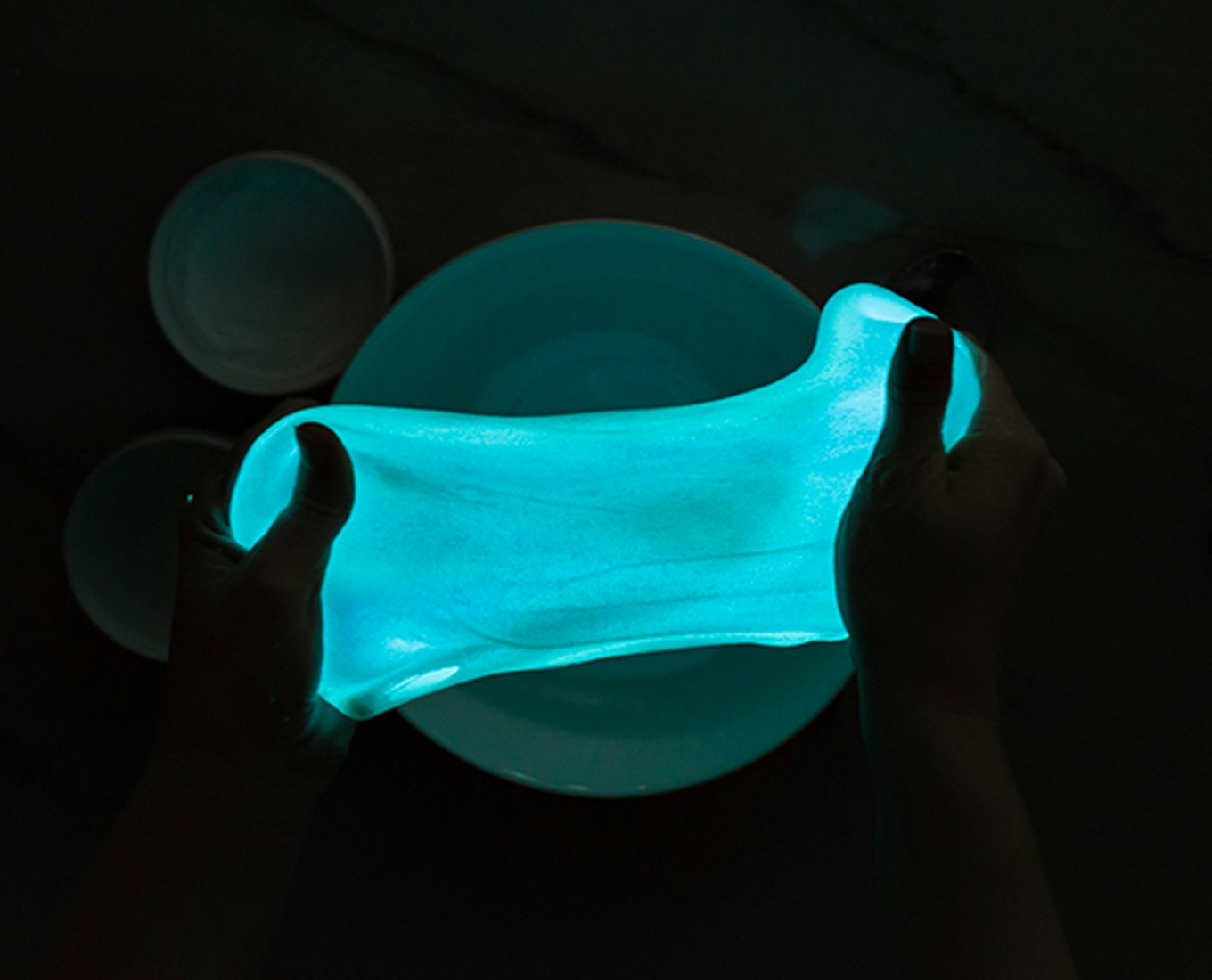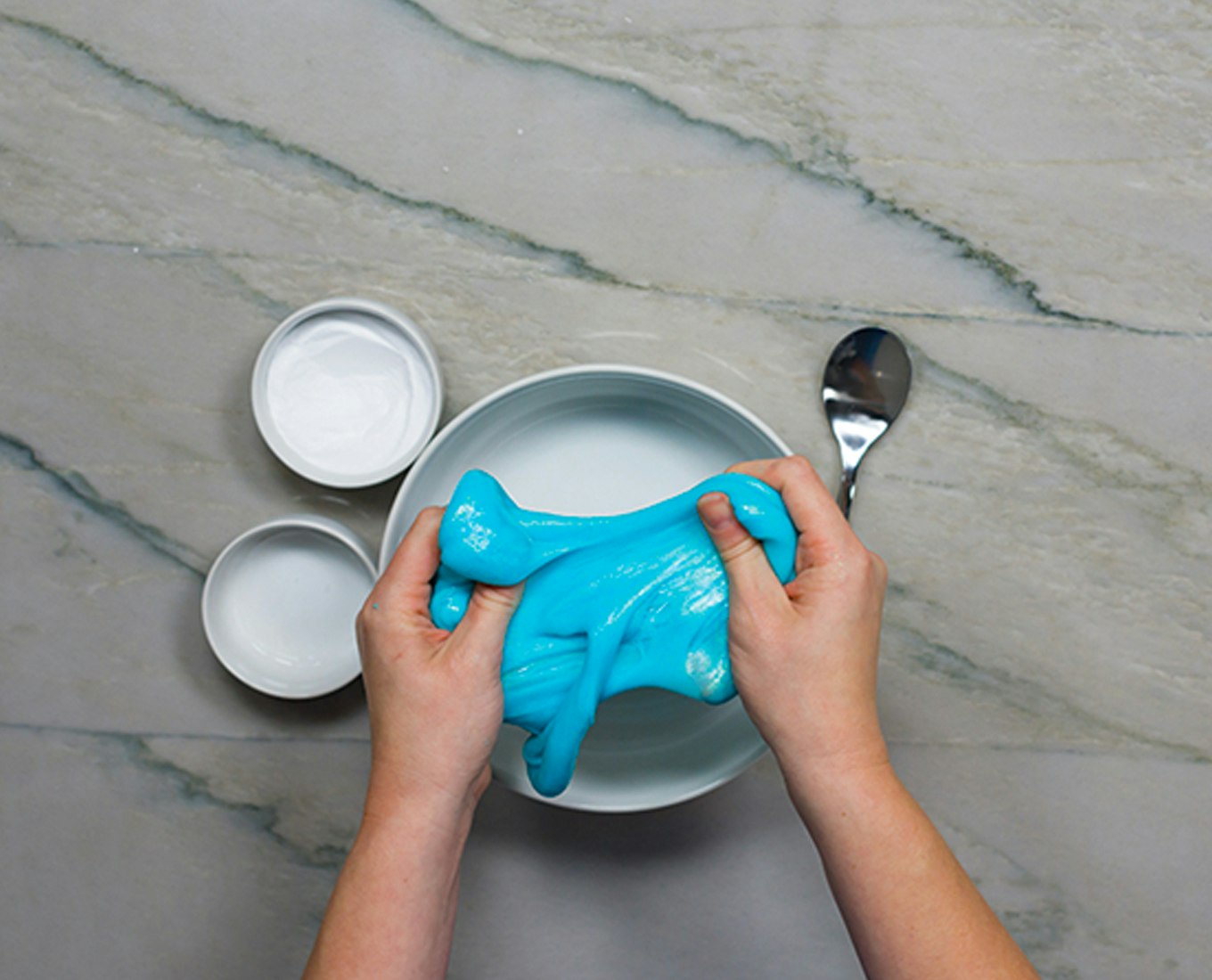Luminescence and Slime Project
Luminescence and Slime Project
A science lesson with glow-in-the-dark slime

supplies needed
• 147.9 ml Elmer’s Glow-in-the-Dark Glue
• ½ tbsp baking soda
• 1 tbsp contact lens solution
• Bowl
• Mixing utensils
• Measuring spoons
• Student journals or lined paper for writing responses
• The book Glow: Animals With Their Own Night-Lights by W.H. Beck
instructions
- Pour the entire bottle of Elmer’s Glow-in-the-Dark Glue into the bowl.
- Add ½ tbsp of baking soda and mix thoroughly. Then add 1 tbsp of contact lens solution. Mix until solution gets thick and slime begins to form.
- Take out the slime and begin kneading it with both hands. If needed, add another ¼ tbsp of contact lens solution to make the slime less sticky.

- Once the slime is ready, turn out the lights. Oooh! See how your slime glows?
- Now, using a torch, read the book Glow: Animals With Their Own Night-Lights aloud to the class while they play with their slime. Discuss what the book tells you about bioluminescence (the scientific term for “glowing”) and how it helps animals to survive and adapt to their environments.
- With the lights still out, hide your slime in the back of the room, under a table, and on a bookshelf. Notice you can still see it.
- Turn the lights back on and put the journal prompt on the board. Have the kids free-write for a few minutes, then discuss their answers as a class.
*Adult supervision is required; this project is not appropriate for children under the age of 3 years. Thoroughly wash your hands before and after making and playing with slime. Warning: If large quantities of contact lens solution are accidentally ingested (greater than a tablespoon), seek medical attention immediately.
*Some contact solution brands work better than others; check out our Slime Tips section for all the details